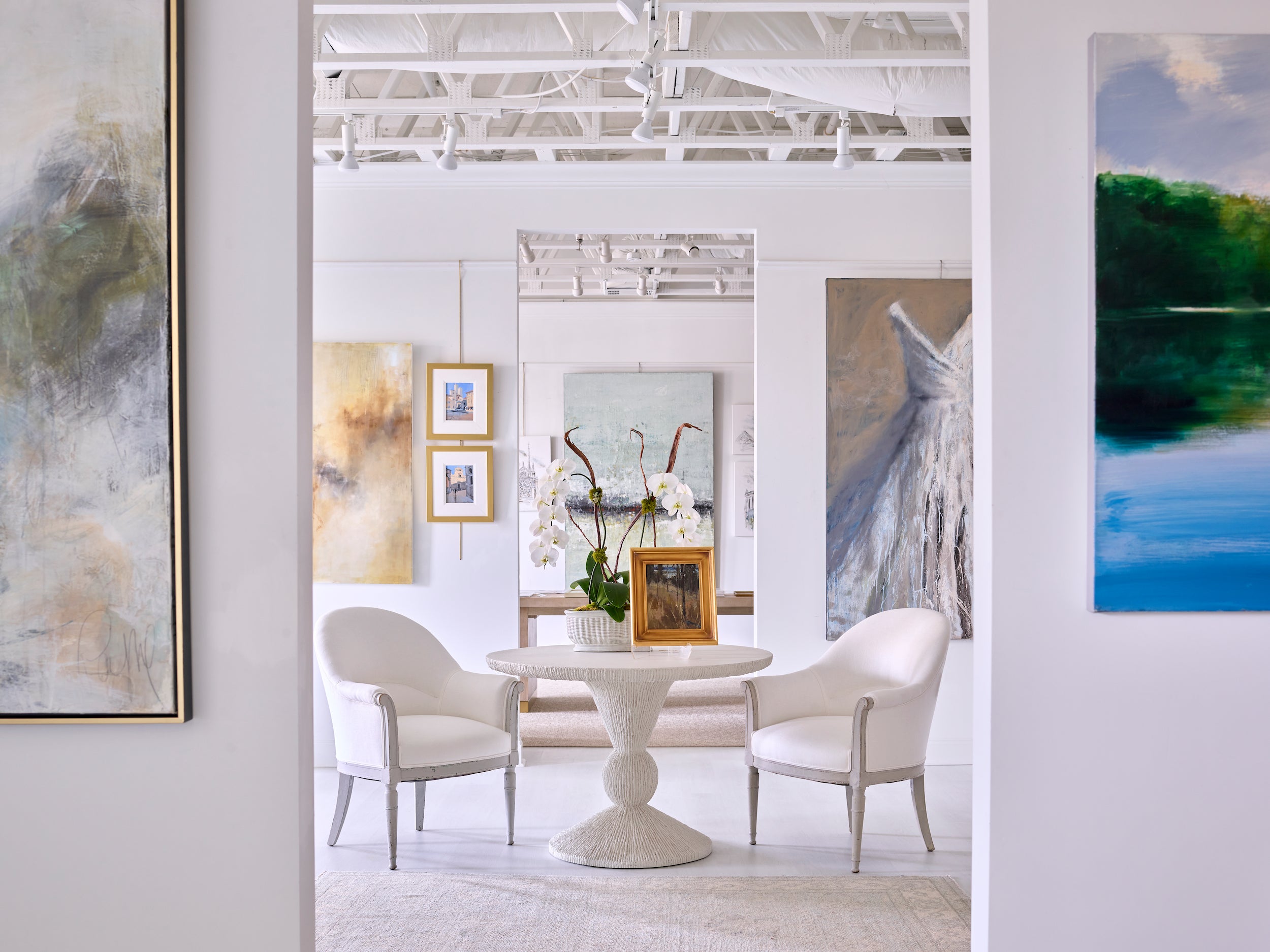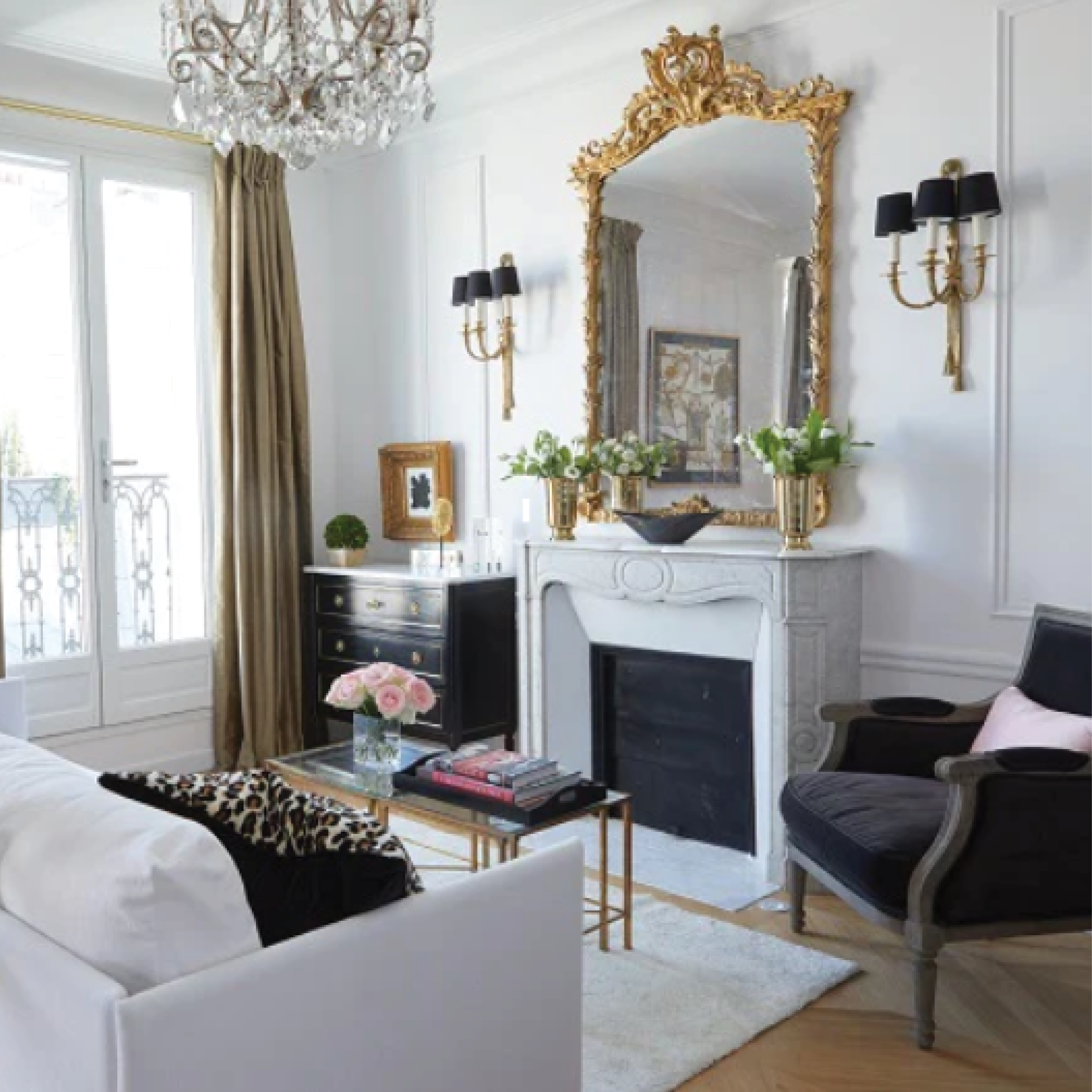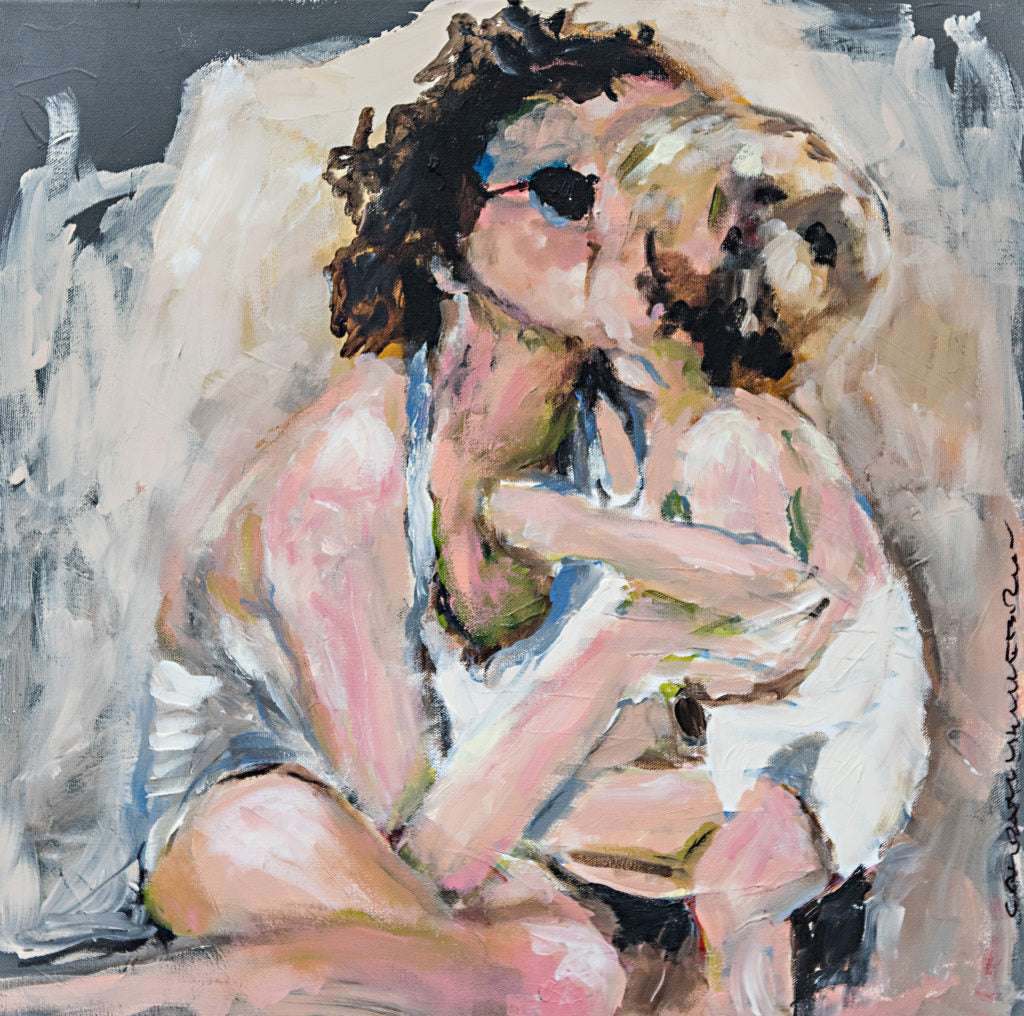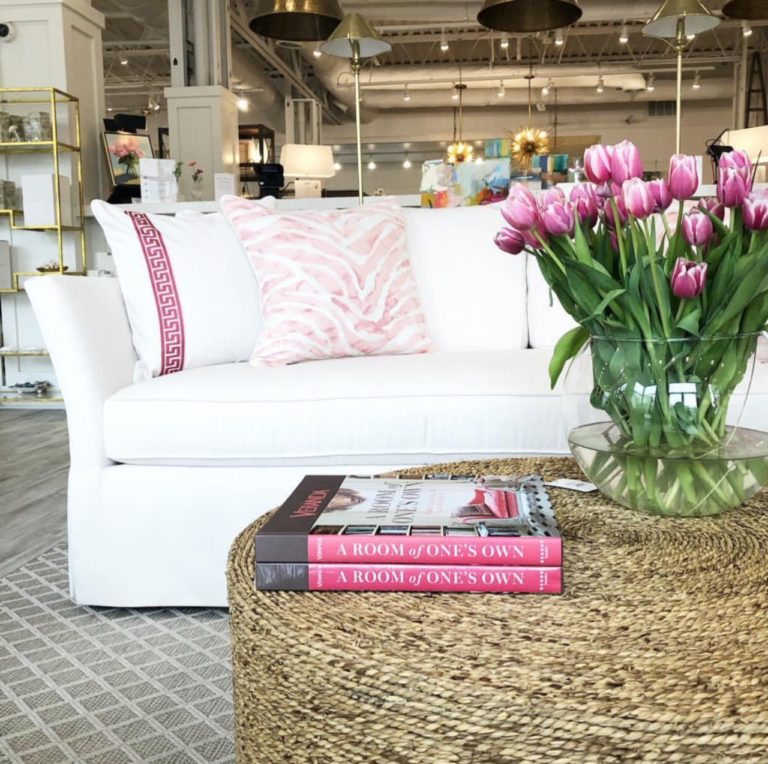A BFF, who will be moving into a new home shortly, called me over the weekend to say she'd fallen in love with a painting at the gallery, and wondered if it would work in her new place. I responded, "If you love it, it'll work anywhere!" I thought about sending her an interview we did several years ago for an arts publication that hammers that point in fairly strongly. But then it hit me: why not revisit the questions in our blog? We actually don't recall if the interview was ever published but we loved the questions, so it's been fun for us to answer them all over again.
What are the main components to building and displaying an at-home art collection?
We always advise our clients to purchase paintings that speak to their hearts. Matching a sofa or paint color is fine, but in the long run, the painting you love with a passion will be the one you constantly gravitate to - and want to hold on to forever, long after the room is repainted and the sofa is recovered.

In terms of preservation, what should at-home art collectors consider?
We suggest using a reliable framer who incorporates archival materials and guarantees his work. Keeping artwork out of direct sunlight is also advisable, although canvases painted with oil or acrylic paint are quite resilient. Encaustic paintings (those created with a wax-based medium) should be kept in a climate-controlled environment.

Please list five unconventional spaces that can be used for an unconventional gallery, a long hallway or foyer, for example?
Our guide is always to put things where you will enjoy them. So if you spend time at your kitchen sink, hang one of your favorite paintings so you can see it. Or if you like to sit and read in a chair, hang a painting low so that you can appreciate it from your chair. If you spend a lot of time at your desk, put one of your favorite paintings on a little easel. Mudrooms, powder baths, closets and stairwells are other spaces that are frequently overlooked. There are no rules except to hang art where you can most appreciate it.


What is the most important consideration when starting an at-home collection?
Start by purchasing only paintings that you love. Educate yourself, visit galleries and ask questions. Read up on artists that interest you. But the bottom line is: buy what tugs at your heart.

What art gallery elements can and should be incorporated at home?
You can learn a lot from galleries in terms of how to frame, hang and light a collection. Ask questions at your favorite galleries and be aware of how they hang groupings or display artists. We also suggest taping the artist’s bio – or any other information about the painting – to the back of the canvas for future reference.

What is your advice to novice collectors who may be intimidated by purchasing art, and the art world in general?
Our rules are fairly simple: If you love it, it will work. If you are intrigued by it, and you believe in the artist, you will probably grow to love it. Work with a gallery that you trust, and let them guide you gently down that path of discovery. The process will be a little intimidating, then exciting and then reassuring and hopefully exhilarating.

Are there any rules to follow when integrating art into one’s living spaces?
If you buy what you love, and not for a space, there really are no rules to follow – except: place the art where you will enjoy it everyday. Don’t be afraid to mix it up and move it around. Don’t treat your paintings as precious commodities. They should be loved and enjoyed on a daily basis.

Even though “good art” is largely subjective, are there certain elements common to all pieces of “fine art”?
Yes, there are many keys to good paintings such as a balanced composition, a confident brushstroke, a strong sense of light and color, original or creative treatment, accurate perspective and many other technical elements that make up a good painting. A gallery should be able to inform you of these elements when you’re considering a painting. Again: don’t be afraid to ask questions.


Is there any place inside the home where art should never be hung? If so, why?
No! Place it where you will appreciate it everyday, even if that means the bathroom, closet, the exercise room or at eye level, next to your desk.

Is it advisable for at-home collectors to incorporate contemporary artwork into traditional interiors or vice versa?
Why or why not? We love the idea of mixing painting styles and purposely hang that way at our gallery. At home, we think this is the first clue that you are in the presence of a serious and committed art lover and collector. Not only does a variety of styles and media add great interest and depth to a collection, but it can reflect a natural evolvement of a collector’s personal taste. It all goes back to buying what you love.

What is the proper way to handle art?
With great care! Paintings should be blanket wrapped or protected with bubble wrap and cardboard for transport. Anything with glass must be triple-wrapped to prevent breakage.
What about lighting art?
Paintings are best lit with incandescent spotlights, but a small portable spotlight trained strategically on the painting will work effectively, too. Natural daylight is always a plus. We’re also big fans of dimmers.
What about hanging art?
We like to hang our paintings at eye-level (using an average-sized person as your guide) and we’re also big fans of composing pleasing collections on a wall. This is a great way to incorporate a number of favorite pieces as long as there is one element that ties them together as a whole (subject, medium, palette, framing).

From an emotional, atmospheric level, how can art enhance one’s life?
Sam Jones, one of our designers who has worked at the gallery and the store, and who is an artist herself said it best:
“Art can make you smile, laugh, cry, bring back memories, calm you
down, perk you up, change your attitude, give you attitude, confuse
you, inspire you, entertain you, transport you, perhaps even change
your life....or at least the way you look at your life. Art should be
your drug of choice. And it's alot cheaper than therapy.”
Sam is passionate about art and we’re pretty sure she’s not in therapy. And, most important, we echo her sentiment and can’t imagine the void our lives and culture would have without art in all its glorious forms!
So back to my friend. If you're still wondering about whether or not to buy it, try the final test: "If you dream about it, get it now!" -- because art is one of a kind, and if you wake up and miss it, there won't be another one like it again. Take it from someone who knows!
Ta ta,
HH










